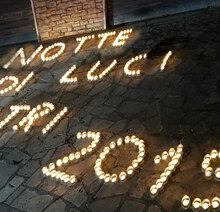 Starting a new tradition to celebrate the holiday season in 2018, the town of Itri in Lazio hosts Notte di Luce, illuminates its historic center with over 22,000 glass jars with candles. The lights are artistically designed by scores of volunteers in magical and surprising ways, turning the village into a glorious flickering wonderland. It's amazing that the candles all get lit within a short period of time at the beginning of this wonderful evening. The luminaries are hung on windows, doors, over streets, on facades of buildings and even on the steps and stones visitors walk upon. If you want to enjoy the holiday festivities of small-town Italy, Itri might be just the place to be. This is certain to be a tradition that continues for years. City of Itri Tel: -07717321 Web Site: comune.itri.lt.it On an average day, Venice can have up to six large cruise ships docking in its harbor--to the tune of about 600 large ships each year. In a town with fewer than 55,000 native inhabitants, this can can be overwhelming. In fact, they let loose up to 30,000 passengers each and every day into the overcrowded streets of this historic gem of a city! What makes matters worse is the geography of the historic center of Venice, comprised of 118 small islands separated by canals and linked by over 400 bridges. On most days it seems like the majority of tourists are concentrated in only a few "must see" locations: the Doge's Palace (Palazzo Ducale), St Mark's Basilica, the Rialto Bridge and Bridge of Sighs, the Jewish Ghetto and Piazza San Marco and it's Campanile (bell tower). At any given time at least some of the tourists are not in the narrow streets and alleys, but on the water--taking expensive gondola rides, less expensive water taxis, and traveling to other islands in the Lagoon, like Murano, Burano or the island cemetery of San Michele. 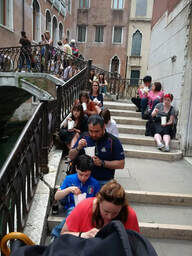 Where else are these people supposed to sit? Where else are these people supposed to sit? There are so many tourists that many have taken to sitting anywhere they can find a spot to enjoy the views, watch the passersby, or to have a quick snack, drink or lunch. They sit along canal embankments, front steps of churches or shops, or simply squat right in the middle of a piazza. I've done this myself on occasion when needing to rest weary legs or to have a gelato and soak in the living, breathing post card that is Italia. But just wait a second. Sitting? Anywhere you please? Shame on you for wanting to sit, and wanting to sit anywhere you can because the cafes are full--and too expensive. Think about this: Venice won't limit the number of cruise ships allowed to dock at one time, but if the mayor of Venice has his way, the city will start fining tourists for sitting or eating in public spaces, on steps, in the piazza and other places... to the tune of $580! Such behavior (unknown to the masses of tourists) is already forbidden in Saint Mark’s Square and the Rialto Bridge. Here's the situation: Venice overcharges and overtaxes the tourists through high prices and city taxes built into gondola and taxi fees or hotel and B&B fees. Then they allow cruise ships to dump an unlimited number of tourists, which causes the overcrowding in the first place. So, Venice makes a ton of cash on allowing an unlimited number of people into the limited space of this small city, and then wants to make more when people simply want to sit down somewhere--and apparently can't find many public places to sit! Hey, Mayor Brugnaro, have you ever thought of installing enough benches and picnic/dining areas? Take Campo Santo Stefano for example: This huge piazza is about 600 feet long by 170 feet wide and there are only two benches. ONLY TWO. Nearby Campo Sant'Anzolo has no benches. How about in your largest public space, Campo San Marco? This huge public space has nowhere for anyone to sit--no benches anywhere. How about taking an idea from the public spaces in Paris and put out folding cafe seating that tourists can move around? No... of course not. It's perhaps a better idea to hit them with a hefty fine! They Need Tourists, but Really? "Loitering"?
Recently, the mayor of Florence implemented a new regulation forbidding "loitering" (standing in one place too long or sitting) and eating in four streets in the historic center which are very popular with tourists. Certainly the politicians will say these new regulations are for the common good, citing trash left behind by tourists as the main reason. But again, I can't count how many times I've been in touristy areas of Italian cities that didn't have enough trash receptacles. Italians know it, too. This is why they toss trash just about everywhere. And when there are bins, they are overflowing from a poor schedule of trash pick-up. It's common knowledge that many local Italian governments can't seem to get their heads around trash and how to remove it in a timely fashion. Is this the tourists fault? Although Venice's canals, bridges and alleys are picturesque, its Mama & Papa shops have pretty much been gentrified--according to the local residents who claim life in the city has become more expensive, because many alimentari (grocery stores), bookstores and bakeries have been closing down and reopened as souvenir or label designer shops. It seems to me that the politicians of Venice have to make a choice... either give in totally to unrestricted, massive numbers of tourists and the potential of destroying this beautiful city, fine and up-charge the tourists in hopes of correcting the problems... or simply use logic and restrict the number of large cruise ships (perhaps no more than 2 at a time docked) to ease the burden and wear-and-tear on the treasures of Venice. Give Mama & Papa alimentary and bistros an incentive to stay in business. Install enough trash bins and seating to match the numbers of tourists flooding your piazzi. There are hundreds of thousands of appreciative Voyagers that would appreciate the gesture. --Jerry Finzi |
Categories
All
Archives
May 2023
|

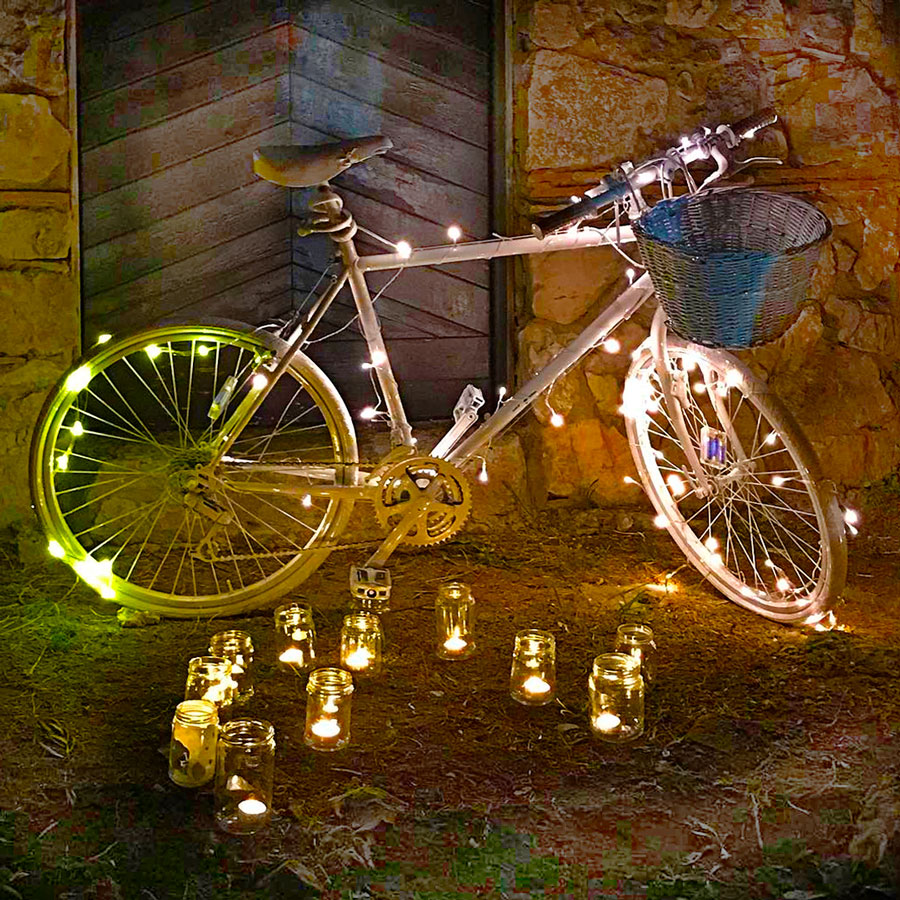
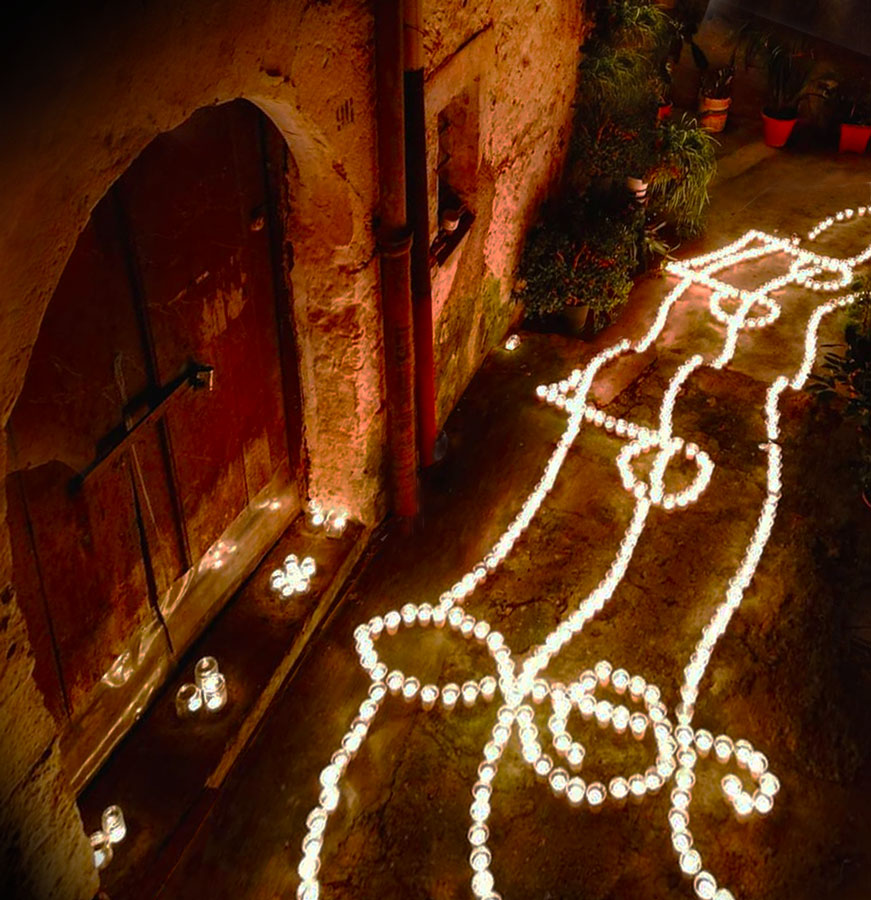
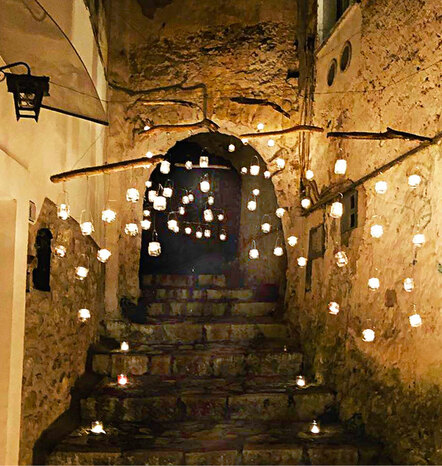
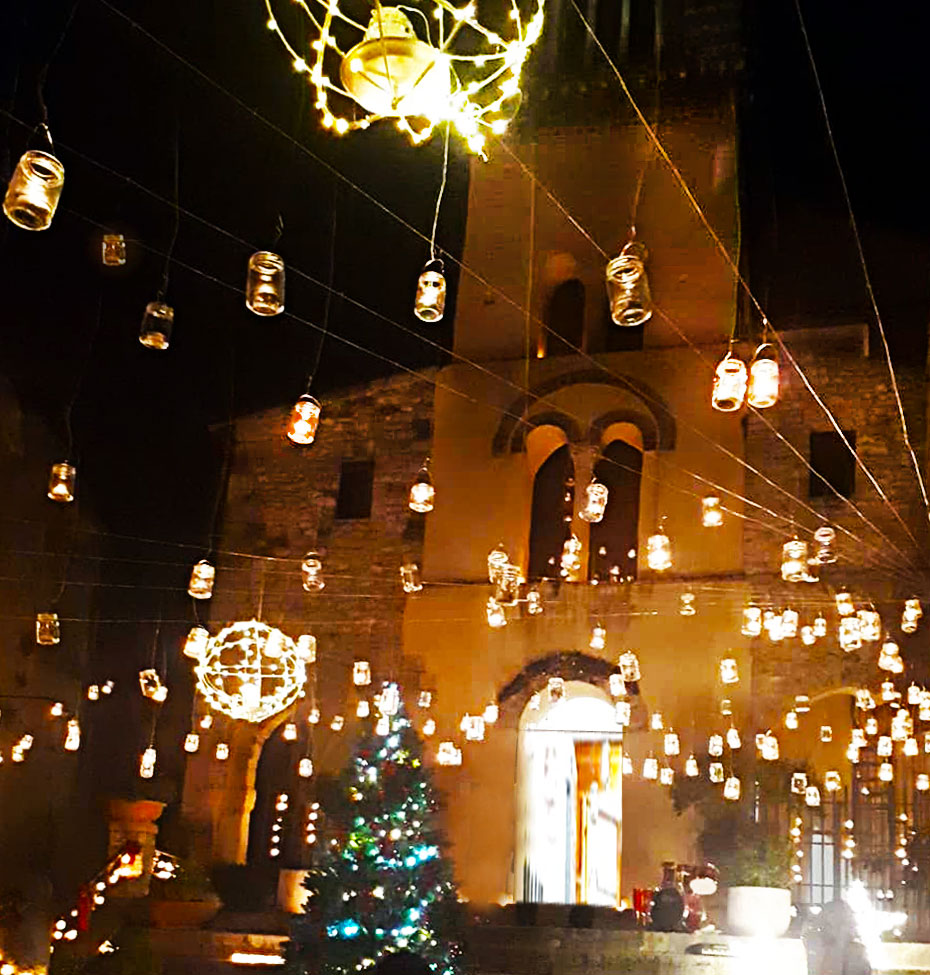
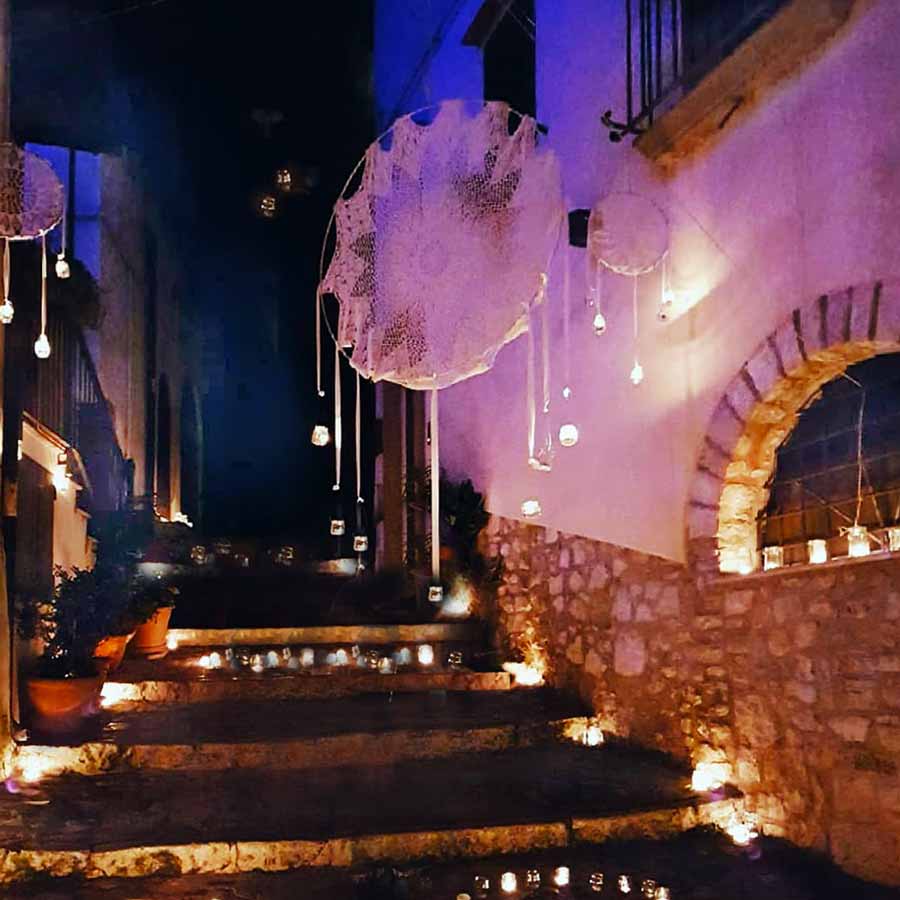
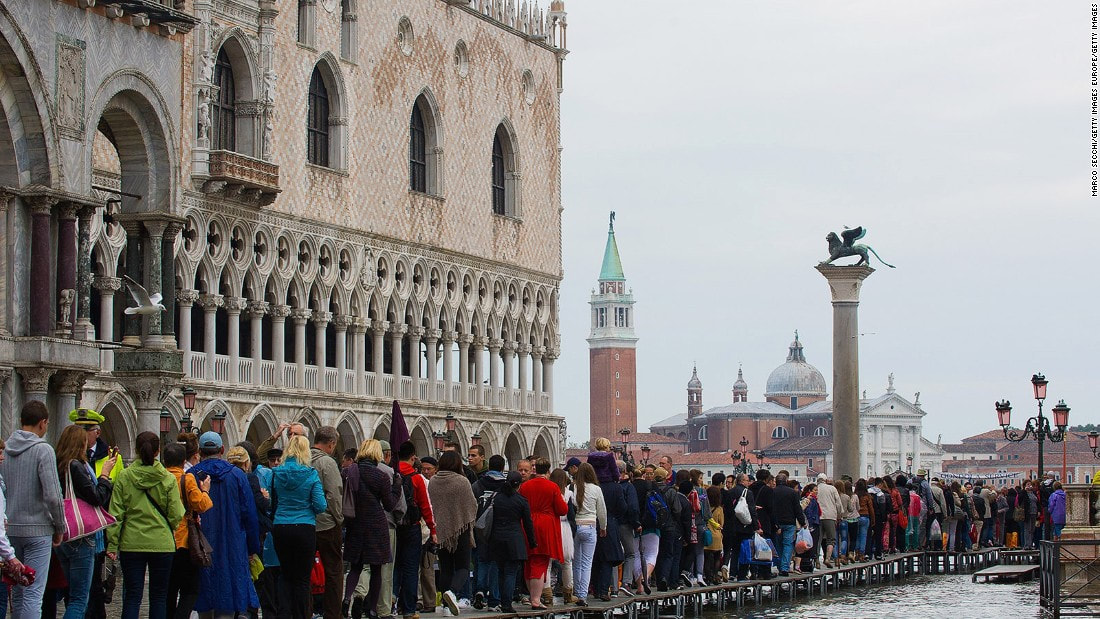
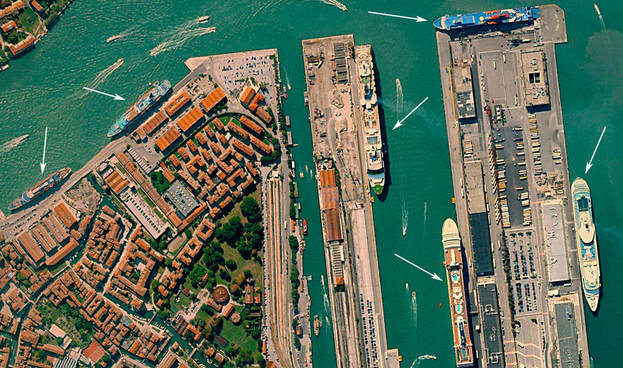
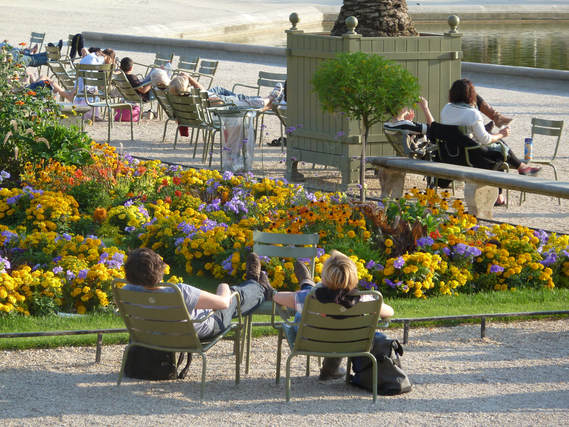
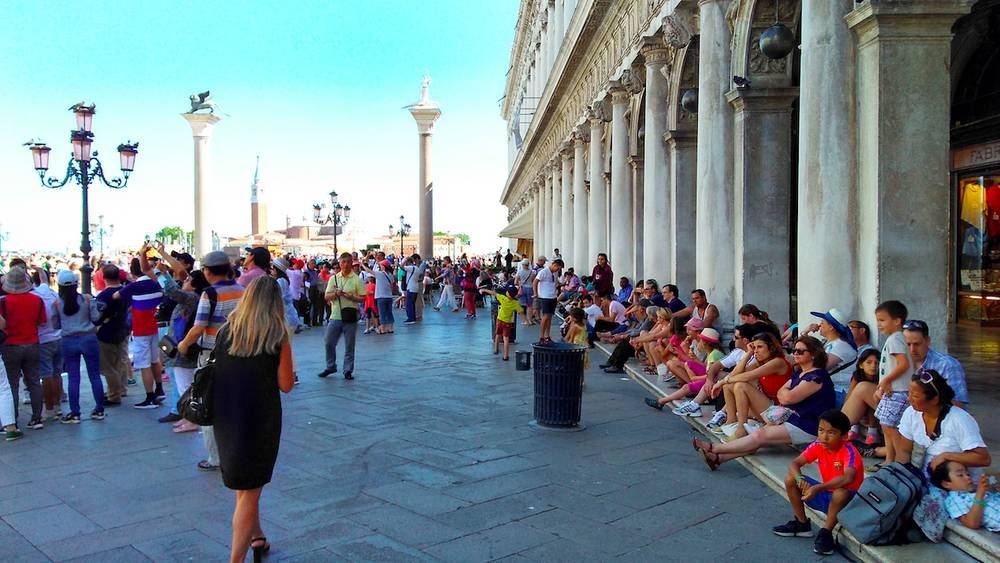
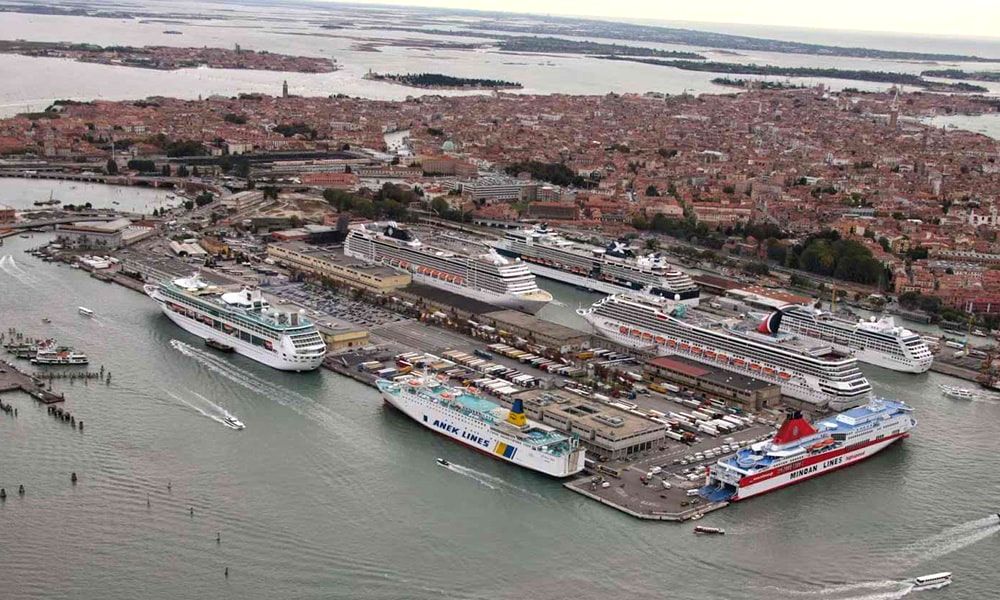

 RSS Feed
RSS Feed
